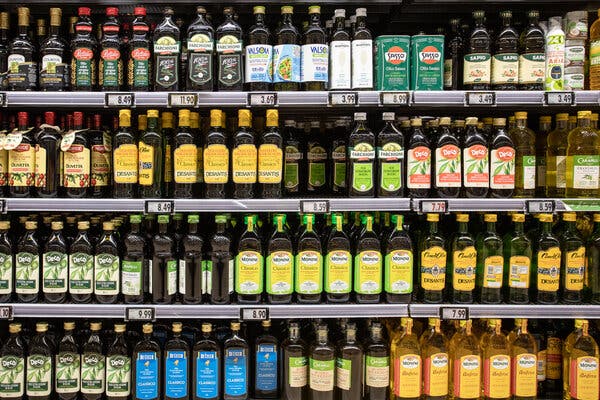Trump hasn’t said whether he’ll move against imported foods, but the effects on oil producers and consumers are already being debated.
Listen to this article · 7:51 min Learn more
Few ingredients are more essential to American cooks today than olive oil. And none is more affected by geopolitics.
That’s because the United States consumes more olive oil than any other country except Italy, but produces very little of it. About 97 percent of the olive oil sold in America is imported, most of it from Spain and Italy.
So President-elect Donald J. Trump’s repeated vows to impose hefty tariffs on imported goods have unsettled the $14 billion global industry. Mr. Trump sees tariffs as a twin-engine machine that can be used both to protect American businesses from competition and to punish uncooperative trading partners — and he has used them against European olive oil producers before.
But many olive oil producers say tariffs will force them to raise prices at a time when Americans are already reeling from inflation at the grocery store. Since 2021, the average price of a liter of olive oil at an American supermarket has nearly doubled, from about $10 per liter to nearly $20, according to the Nielsen research firm.
Mr. Trump hasn’t specified which products, or countries, will be subject to tariffs, though he has threatened to impose a 25 percent tariff on all imports from Canada and Mexico. During his first administration, olive oil bottled in Spain — which supplies nearly half of the world’s olive oil — was subject to a 25 percent tariff as part of a continuing trade dispute. Under President Biden, that tariff was suspended in 2021, but could be reinstated.
Thank you for your patience while we verify access.
